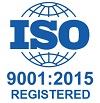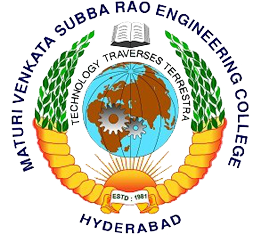WITH EFFECT FROM THE ACADEMIC YEAR 2013 - 2014
ME 459
MODERN MACHINING AND FORMING METHODS
(ELECTIVE - III)
Instruction 4 Periods per week
Duration of University Examination 3 Hours
University Examination 75 Marks
Sessional 25 Marks
Unit-I
Ultrasonic Machining (USM): Introduction, process description, abrasive slurry, Abrasive materials and their characteristics. Functions of liquid medium in slurry, Types of Transducers, effect of process parameters, applications and limitations. Abrasive Jet Machining (AJM): Principle of operation, process details, process variables and their effect on MRR and accuracy.
Equation for MRR. Advantages, disadvantages and applications. Water Jet Machining (WJM): Schematic diagram, equipment used, advantages and applications.
Unit-II
Electro Discharge Machining (EDM): Process description with schematic diagram, process parameters, functions and characteristics of dielectric medium, dielectric fluids, over cut and side taper’ Flushing, Mechanism of metal removal, crater volume, types of power supply circuits, mathematical analysis of metal removal rate (MRR), characteristics of spark eroded surfaces, advantages, disadvantages and applications. Wire EDM: Process description and applications. Electro-Chemical Machining (ECM): Schematic of the process parameters, function and characteristics of electrolyte, chemistry of the process, Equation for specific MRR and electrode feed rate, advantages, limitations and applications., Rotary Machining, Hot machining, high speed machining, description of each process, process parameters, advantages and applications.
Unit-Ill
LASER Beam Machining (LBM): Principle of LASER Beam production, materials used, thermal analysis of the process, process parameters, equations for power density and machining rate, advantages, limitations and applications. Plasma Arc Machining (PAM): Introduction equipment used, process description and parameters, types of plasma arc; Transferred arc and non transferred arc and process applications. Electron Beam Machining (EBM): Schematic of the process, process parameters, principle of
production of Electron beam, equipment used, Advantages, disadvantages and applications. ION Etching: Process description and applications.
Unit-IV
Rubber Pad Forming: Principle of the process, process details and its types; Guerin, wheelon, Marfoming and Hydro forming processes and applications. Electro-Hydraulic forming (EHF): Schematic of the process description and its applications. High Energy Rate Forming (HERF): HERF hammers, principle of explosive forming, Explosive materials, types of explosive forming, stand off operation and contact operation, the pressure pulse, Gas bubble and the process applications.
Unit-V
Stretch Forming: Introduction, types of stretch forming: stretch draw forming, rotary stretch forming or stretch wrapping, compression forming, radial draw forming. Stretch forming equipment and accessories, accuracy and surface finish, process variables and limitations. Tube spinning: Introduction, methods of tube spinning, Backward spinning, Forward spinning, machines and tools used. Machine variables, speeds and feeds, effect of tube spinning on work metal properties and applications. Hydrostatic Forming: Process principle, description and applications. Water Hammer Forming (WHF): Schematic diagram of the process, principle of operation, process variables, work materials, process limitations and applications.
Suggested Reading:
- 1.P.C. Pandey andH.S. Shah, Modern Machining Process, Tata McGraw Hill Publishing Co. Ltd., New Delhi, 1980.
- 2.A. Bhatacharya, New Technology, The Institution of Engineers (India), 1984.
- 3.Davies and Austin, Developments in High Speed Metal Forming,
The Machinery Publishing Co. Ltd., 1985.
- 4.Production Technology, HMT.



